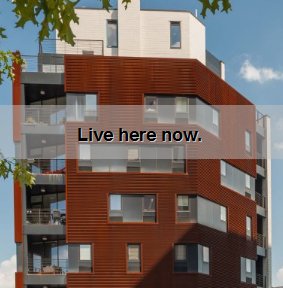Manhattan is known for its neon lights on Broadway and the stately residential Park Avenue, Paris is home to the fashionable tree-lined Beaux Arts Champs-Elysees, and the Bronx offers the Art Deco Grand Concourse. These are among many major thoroughfares that give a distinctive sense of place to communities, and enhance quality of life.
On the other hand, the-7.2 mile Queens Boulevard, which stretches from the Queensboro Bridge in Long Island City to Jamaica Avenue in Jamaica, is gruesomely referred to as “The Boulevard of Death,” with the occasional sign reading “A Pedestrian Was Killed Crossing Here.”
It is also remembered as a banal 12-lane asphalt superhighway, bounded by predominantly commercial developments. At Yellowstone Boulevard in Forest Hills, it is at its widest with 16 lanes.
The first priority is to reduce – and ideally eliminate – accidents and fatalities as a result of the configuration of Queens Boulevard, reckless driving, and pedestrians crossing against traffic lights.
From 1993 to 2000, 72 pedestrians were killed. In recent years, the Department of Transportation installed pedestrian countdown signals, lowered the speed limit from 35 to 30 mph, installed fencing to prevent jaywalking, and provided greater pedestrian crossing times.
As a result of these measures, in 2011 there were no pedestrian fatalities, but many more upgrades are essential.
Attorney Peter W. Beadle of Rego Park is a project leader with Making A Better And Safer Queens Boulevard, a Facebook group which has nearly 220 members. The group’s mission reads, “We are a coalition of residents and civic groups who live, work and/or travel along Queens Boulevard, who want to make ‘The Boulevard of Death’ a safe street for our families, and a better, more accessible street for Queens.”
Queens resident and Facebook group member Vanessa Persaud is a stay-at-home mother of four children who worries about their safety. A former co-worker, Caprice, who was in her twenties, was crossing the Boulevard when a car struck and killed her.
Beadle discussed short-term improvements. He suggested “leading pedestrian intervals” to give pedestrians a three to five-second head start on traffic, additional bulb-outs to narrow intersections and decreasing the width of roadways.” Beadle’s long-term vision is “a full redesign to bring Queens Boulevard in line with its original designs and the designs of other great boulevards,” he said. “It would widen medians between local and express lanes, and narrow traffic lanes to calm traffic and provide room for green spaces, bikeways, and multi-use paths and benches.”
Group member Robert Kozma of Forest Hills has worked for the New York City Transit Authority for 37 years, and has also been active with various groups advocating safe, complete streets and public transit initiatives, including bus bulbs installed in Lower Manhattan.
“This speeds up bus service, benefiting transit riders,” he said. “It also calms traffic, which is sandbagged behind the stopped bus, and prevents accidents between buses pulling away from a stop and passing vehicles.”
A second objective is to transform Queens Boulevard into a thoroughfare of greater aesthetics that would boost its cleanliness, curb appeal, and quantity and quality of trees and plants.
Beadle envisions trees, street furniture, plazas, and pocket parks along the medians and sidewalks in the short-term. He referenced Ocean Parkway in Brooklyn as a redesign model for Queens Boulevard.
Group member and Forest Hills resident Laura Yoshida supports the idea behind the Public Plaza Program, which beautifies a neighborhood and also helps redirect traffic flow. The Department of Transportation partners with community groups that would operate and maintain these spaces.
“In Manhattan, some roads have been converted into sidewalk sitting areas with tables and chairs,” she said. “I would love that for Queens Boulevard near Austin Street.”
In April of 1941, Queensborough, a publication by the Queens Chamber of Commerce, boasted that the medians were paved with varicolored blocks, and healthy trees of fair sizes were planted. Along Calvary Cemetery and Forest Hills, 100 Tulip trees were donated by the famed Lewis and Valentine Nurseries.
Today, there is seemingly no reminder of the Tulip trees on the medians, but passersby see Sycamore, Honey Locust, Gingko, and Oak trees. Some trees are dead or missing, or are in poor health due to litter, car fumes, and cramped tree pits.
Medians are often cracked and littered. Forest Hills resident Steve Melnick founded the Queens Boulevard Restoration Group, and funded a series of cleanups with volunteers. He has been in contact with Councilwoman Karen Koslowitz’s office to implement a weekly, bi-weekly or a monthly cleanup of all medians in her district.
“Now we have only one or two median cleanups by the city per year,” he said. “Perhaps the Doe Fund can get involved. We are officially a 24/7 community, and need a routine maintenance program.”
Elected officials expressed their concern.
“As an early supporter of countdown clocks, the implementation of the gates, and improved quality of life measures, Queens Boulevard has always been one of my major initiatives,” said Koslowitz. “This year, I proudly funded $1 million of capital money for the repair of medians and walkways on Queens Boulevard. ”
“Safety conditions on Queens Boulevard continue to be a top priority for my office,” said Assemblyman Andrew Hevesi. “My office continues to work with the New York City Police Department and the Department of Transportation, to monitor pedestrian safety measures surrounding the Boulevard.”
The Facebook group will be holding a public meeting on September 18, 2012, and are open to ideas on a location. They envision scheduling routine meetings on the third Tuesday of each month.
“One of our primary goals is to reach out to [the community] and work with them to advocate for changes and develop practical solutions that are capable of being implemented,” Beadle said. “It will take all communities along Queens Boulevard to make these changes.”
You can play a role in your neighborhood’s future by joining Making A Better And Safer Queens Boulevard (facebook.com/groups/betterqueensblvd) and adding your friends to the initiative.

